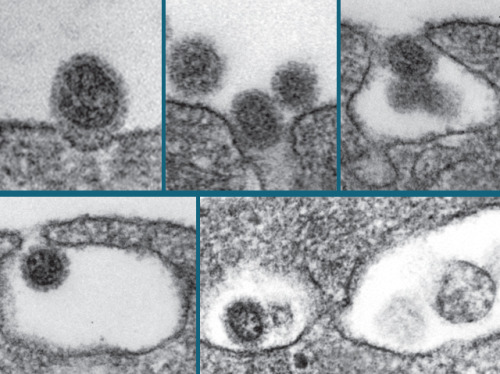
Viruses and Clots
With a viral infection comes an increased risk of a heart attack, caused by a clot blocking blood flow to the heart. But why isn’t clear. Key to formation of blood clots are the circulating platelets and so researchers looked to see how they behave during a viral infection. Here, electron microscopy reveals flu virus particles (dark spheres) being engulfed by a platelet, watched over time until the virus is completely internalised (bottom right). Engulfing the virus makes the platelets release a chemical called C3 which causes immune cells called neutrophils to release their DNA. This act is thought to be beneficial as it prevents viruses commandeering that genetic code for their own replication. However, there’s a downside: these broken, sticky neutrophils aggregate with the platelets. It’s these clumps that may be contributing to the higher chance of a heart attack.
Written by Lindsey Goff
- Image adapted from work by Milka Koupenova and colleagues
- University of Massachusetts Medical School, Department of Medicine, Division of Cardiovascular Medicine, Worcester, MA, USA
- Image originally published under a Creative Commons Licence (BY 4.0)
- Published in Nature Communications, April 2019
You can also follow BPoD on Instagram, Twitter and Facebook
Archive link



Комментариев нет:
Отправить комментарий